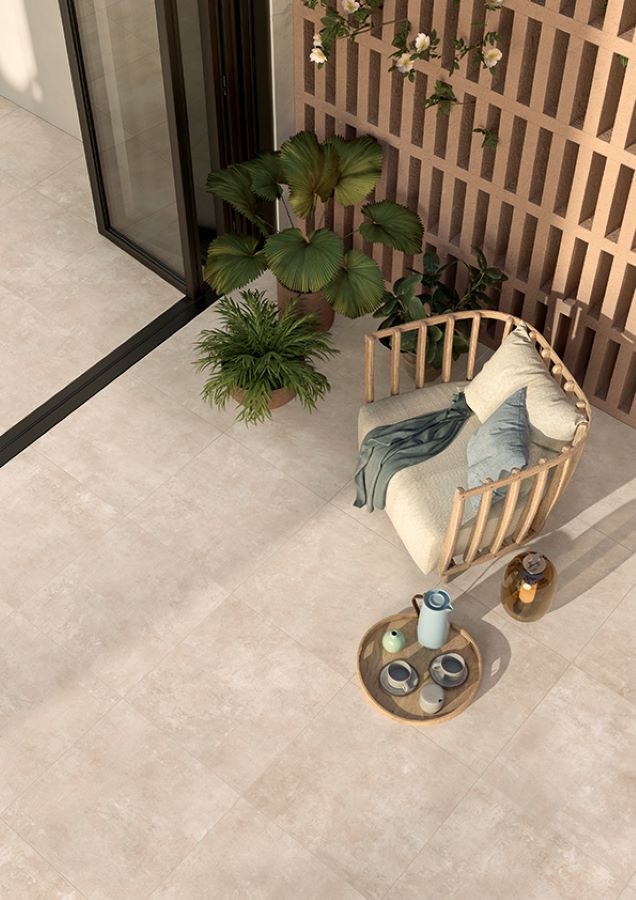Helpful Information
Helpful Information
Below is some helpful information regards your tiling project. The list is not exhaustive so please do get in touch with us if you have specific queries or questions.
Correct installation of your Porcelain or Ceramic tiles is as important as the product itself. It is therefore imperative to consult with a competent tiler/installer in the storage, handling and laying of your porcelain or ceramic tiles and use a good quality, suitable adhesive and grout.
We would recommend referring to the British Standards for wall and floor tiling and always using a professional installer for your project.
BS5385 is the code of practice for wall and floor tiling and there are 5 parts each covering specific areas. For further information contact British Standards.
| Part 1 | Design and installation of internal ceramic, natural stone and mosaic wall tiling in normal conditions |
| Part 2 | Design and installation of external ceramic and mosaic wall tiling in normal conditions |
| Part 3 | Design and installation of internal and external ceramic and mosaic floor tiling in normal conditions |
| Part 4 | Design and installation of ceramic and mosaic tiling in special conditions |
| Part 5 | Design and installation of terrazzo, natural stone and agglomerated stone tile and slab flooring |
With Porcelain and Ceramic, variations can occur in size and shade between different batches. It is therefore important you order enough tiles for your project in one go and also allow for waste. We recommend ordering your required quantity plus at least 10% for tiles under 600 x 600 eg 300 x 600, 600 x 600mm and between 15-20% for large format tiles eg 800 x 800, 400 x 800, 900 x 900 or 1200 x 600, 1000mm x 1000mm. Please speak with us if you are unsure regards wastage. Super-size slab porcelains (eg 2700mm x 1200mm and 1800mm x 1000mm) are sold by the sheet so please speak with us.
For wall tiles, it is imperative to ensure the substrate has a suitable weight bearing capability to take your chosen tiles, particularly with larger formats eg >330mm x 330mm. Note the weight includes the tile plus the adhesive and grout.
Refer to British Standards BS5385 to find the weight bearing capacity for different substrates and speak with us if you require specific tile weights – you will find pack sizes and weights on our website under the Technical tab for each product.
Note that Plywood is no longer accepted as a suitable tiling substrate. We work with Mapei and BAL/Ardex and either company can advise on a suitable base for your tiling and how to install it. It is also very important to ensure the correct preparations and products are carried out and used for wet rooms. For more information speak with your installer or contact us.
| Wall Substrate | Maximum weight of tiling per m2*** |
|---|---|
| Gypsum plaster | 20kg |
| Gypsum plasterboard skimmed (12.5mm thickness) Unskimmed** (12.5mm thickness) | 20kg 32kg |
| Plywood (WPB)** | Up to 30kg |
| Cement: sand rendering | Generally no restriction as long as the rendering has sufficient composition and has been installed correctly to achieve high strength |
| Lightweight foam-cored tile backer boards | Up to 60kg* |
| Glass reinforced cement-based boards | 50kg* |
| Gypsum fibreboards | Approx 35-40kg* |
| Other rigid tile backer boards | Consult manufacturer |
For uneven substrates use a self-levelling mortar to create a uniform, flat surface compatible with the bonding adhesive used to lay tiles. The type will depend on the thickness of the layer and the application ie indoor/outdoor, envisaged traffic and original unevenness.
To ensure a firm bond between tiles and substrate check the surface is free of things like dust, plaster, lime, grease, moisture.
This depends on tile size and thickness. Tiles should be handled with gloves and special care and maximum safety precautions taken to prevent dropping or breaking tiles.
Always rest tiles on cork supports or a similar material that can withstand the weight of the tiles.
Because edges are rectified, they must be handled carefully taking care not to knock them against one another so as to avoid damage to edges.
Larger format tiles should be handled by at least two people. The tiles can be taken out of their packaging by hand or using a lifting frame with suction pads – particularly for 1000 x 1000 or 1200 x 1200mm formats.
It is important that slimline materials do not sag or bow in the middle. To assist in this, suction pads can be used.
For 1800 x 1000mm and super-size slabs 2780 x 1200mm the above applies with the additional recommendation that as well as a special handling frame with suction cups for lifting the slabs it may be necessary to use a trolley with wheels for transporting the heavy weights. Take extra care when moving the slabs. Please note it takes at least four qualified operators to lift the 2780 x 1200mmm slabs out of the crate and move them to the work area.
Always adhere to on-site health and safety measures.
It is essential that floor tiles are fixed in a solid bed of adhesive.
To ensure a successful installation and solid bed fixing the following guidelines should be followed:
Consideration should be given at all stages including setting out, as there will be increased wastage and therefore more tiles will be required for the installation.
Health and safety should be considered due to the increased weight of the tiles and a risk assessment should be undertaken. Ensure correct handling of large format tiles is undertaken.
When fixing to walls, ensure that the background is able to support the weight of the tiles.
It is vital that the background or sub-floor is completely flat to ensure tiles can be solidly bedded.
It is critical to use the correct adhesives. A cement-based adhesive should be used. Always consult with your tiler and adhesive manufacturer to ensure you are using the correct adhesive.
With rectangular large format tiles, the overlap should not exceed 33% in a staggered brick-joint pattern. It is not appropriate to use a standard 1/2 offset pattern.
Ensure the appropriate size notched trowel is used as recommended by the manufacturer. Please contact us if you require more information regards large format tiles and visit Installation for more details.
For super-size slabs if you require more information regards handling, cutting, drilling and installation please contact us. More information can be found on our Installation page.
Our website shows these slabs suitable for walls (please ensure weight bearing capability of the wall is sufficient). However, they are suitable for installation to floors but please ensure you speak with us before purchasing.
For the best end results, it is useful to plan the layout of the tiles by positioning them on the surface to see what they will look like prior to installing. Most of our collections feature a wide variety of different designs for variation and authenticity and dry laying tiles first can be helpful to decide which tiles are laid where and also to help avoid unsightly cuts or grout lines. Also, your tiler can plan to ensure that any tiles that may incur minor chips during unpacking can be utilised for cuts during the installation process.
Choice of adhesive is based on the project environment, type of tile, and the substrate being adhered to. We recommend the use of C1 cement-based adhesives for porous white body indoor wall tiles and C2 adhesives for indoor and outdoor porcelain wall and floor tiles. In the case of larger formats the adhesive should also be flexible.
Ready-mixed adhesives are not recommended. Always seek the advice of a professional tiler who will be able to advise on the best adhesive for your project and before purchasing always check the label on the packaging. Good quality products will carry a classification rating for example a CE mark and a BS EN 12004 reference.
Rectified tiles benefit from minimal grout joints and require a minimum 3mm grout joint for floors and 2mm grout joint for walls. For slabs this needs to be increased relative to the size of the panel for example a 3m panel will require a joint width of 5mm.
Your grout colour choice will have a bearing on your adhesive colour – a grey adhesive may be visible through a white grout for example so speak with your installer before fitting.
Consult BS5385-1 and BS5385-3 for further information on grout joints for internal wall tiling in normal conditions and the installation of internal and external ceramic floor tiling in normal conditions
The right type of grouting material is dependent on for the type tile, location of tiling and surface conditions ie inside or out.
CG1 Normal cementitious grout
CG2 Cementitious grout with improved performance
RG Synthetic Resin (generally epoxy)
Choosing the correct grout is imperative so please speak with your tiler or contact us for more information.
After grouting, tiles must be properly cleaned to remove any surplus grout or other residues to avoid future maintenance issues. See Cleaning and Maintenance for more information.
10mm thick Porcelain must be installed onto a solid concrete bed and with the correct adhesives and grout. These tiles are not suitable for installation with a pedestal system. Contact us for more information or see Installation.
20mm thick Porcelain should also be installed onto a solid concrete bed. However, these tiles can also be laid directly onto grass or gravel, on a pedestal system or onto compacted hardcore with the correct adhesive products. In all cases, correct installation processes must be followed and we always recommend using a professional installer.
Ongoing, porcelain and ceramics really just need a damp cloth and water. For a good cleaning of your floor, you can opt for a neutral detergent with high cleaning power such as Fila Cleaner Pro for quick and effective cleaning – it eliminates everyday dirt without leaving a residue and prevents layers of organic dirt accumulating.
For more information visit our Installation Page.

